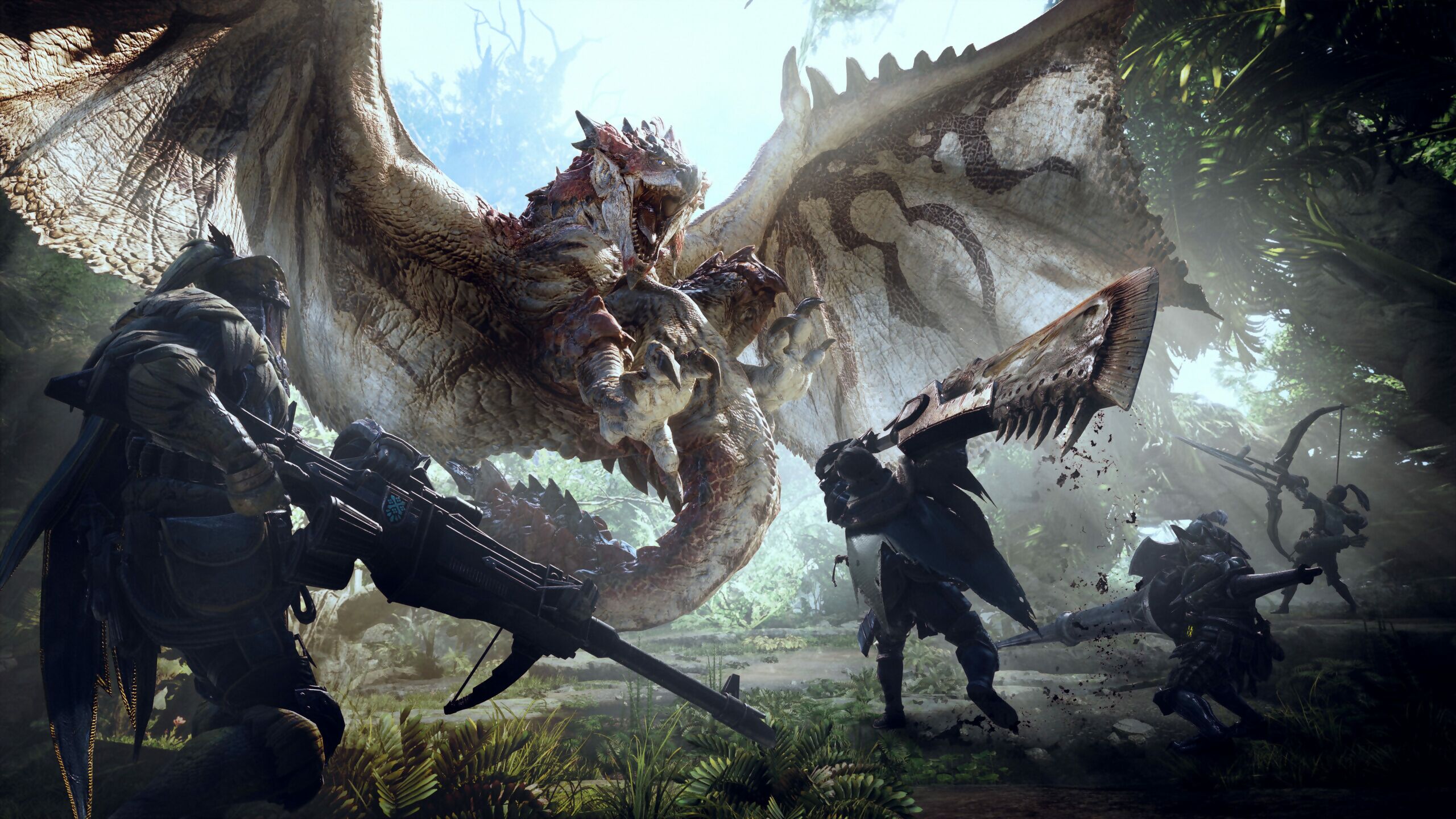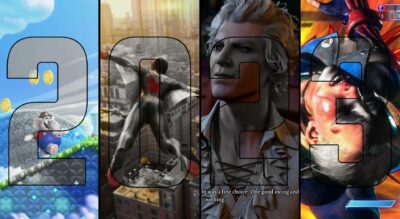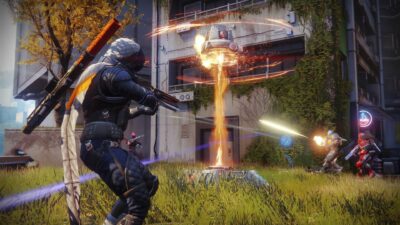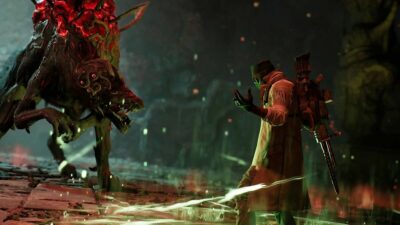
In recent years, hunting games have proven extremely popular – be it The Witcher’s silver swords and alchemy, Bloodborne’s trick weapons and dark city streets, or Monster Hunter: World’s big-game pioneer fantasy. But why do we love hunting so much?
In-game, those reasons are deceptively simple – harvesting currency and materials affords us the power to upgrade ourselves, making us more effective at hunting, and in doing so, gathering ever-more currency and materials. Either that, or harvesting prey simply allows us to survive and maintain ourselves. But as motivations, these cycles don’t go very far to explaining what the player experience of the hunt actually is, or why we keep returning to it.
We’ve been hunting for thousands of years, and as time has passed, motivations have shifted, reflecting wider changes in our societies. But hunting, whether for sport or necessity, still retains that cultural history, which developers can channel when creating games.
The hunt also offers a recognisable structure around which to craft mechanics. By exploring the fascinating ways in which developers are playing with these elements, we can begin to examine the true allure of the video game hunt.
Hell is Other Hunters
Hunt: Showdown is one of the most original shooters to have emerged in recent years, in part due to its interpretation of an important aspect of the hunting experience: tension. In the backwaters of an 1890s Louisiana bayou, players face off against each other, tracking their supernatural quarry across the swamps in hopes of claiming a bounty. But Hunt’s secret? You don’t know who else is out there.
“Very early in the project, we realised the opportunity to create tension through deprival of information,” says Dennis Schwarz, lead designer on Hunt. “Keeping the player guessing about who else might still be in the game helped us instil a healthy level of paranoia. You can never be sure that you are truly alone on the map, so as a consequence, you have to expect an ambush around every corner.” One of the main methods of achieving this tension is Hunt’s masterful soundscape. While enemies represent a very real danger in their own right, the bayou is also littered with sound obstacles – broken glass, animals, chains, water, reeds, even footsteps must be considered.

From shotgun-axes to explosive spears, Hunt reimagines the Victorian arsenal.
“All the sounds you hear [come] from a real source and attenuate realistically over distance,” explains Florian Füsslin, Hunt’s audio director. “If you hear crows fly off or a barrel exploding, someone must have caused that. In addition, we have a high dynamic mix to have things stand out and give the player a realistic sense of how loud they are. That’s why hearing nothing can create more tension in an intensive firefight – it is too quiet to be true!”
Through this use of the unknown, Hunt creates an experience which places intense pressure on player approach. Through what Schwarz refers to as “the mental map of things happening around them”, players have to choose the right moment to act. “A patient hunter is a successful hunter,” Schwarz continues.
“It’s important for players to read the flow of the game to understand when it makes sense to rush in and go for the kill, or when it’s better to wait for another team that made themselves known by triggering some crows, to cross that open field you have covered with your sniper rifle.” These second-by-second decisions, based on limited information, are what really tests the mettle of Hunt’s players, and creates such a unique hybrid experience. “We are very happy at having found a nice blend between the different aspects of a hunting experience and the tension of a forsaken place overrun by terrifying horrors,” laughs Schwarz.
“The key for us was realising that horror alone is not powerful enough. However, with tension, rather than horror, you can keep the player on edge for a much longer time. You could argue that the real tension in Hunt: Showdown doesn’t come from the monsters, as terrifying as they might be, but from the other players with their unpredictable movements at the most inconvenient times.”
The Thrill of the Chase
Two years ago, the fascinating robot-hunting epic, Horizon Zero Dawn, graced our screens for the first time. Mixing a science fiction concept with ancient tribal tradition, Horizon creates a form of future myth, a world where dwindling pockets of humanity must hunt machines to survive.
“The world of Horizon Zero Dawn had to be a dangerous place in order to provide friction and challenge to the play experience, and the machines inhabiting it were a great asset for achieving that,” says game director, Mathijs de Jonge. “They had to be dangerous and unrestricted by size or current technology. Conversely, human beings are limited in size and strength. It is basically a David vs Goliath setup.”

Horizon Zero Dawn’s hunters craft their gear from the materials they harvest from machines.
As techno-tribal huntress, Aloy, players are almost always punching above their weight, but the experience of tackling these machines ties into another recognisable aspect of the hunt: the chase. It’s an idea that implies momentum, which Horizon expresses not only through the incredible dynamism of Aloy’s movements in traversing the environment, but in using your prey’s own momentum against them.
“For players to be able to play tactically and feel clever while hunting, Aloy had to be agile and equipped with a variety of tools and weapons,” explains de Jonge. “The idea of using trip-wires to set off traps goes back very far in human history, so it made a lot of sense for us to use these as part of a more primitive toolset.” Using a prey’s momentum against them flies surprisingly close to real ancient hunting methods, such as the Native American buffalo jump, where animals were driven en masse over a cliff edge.
Aloy also uses the ropecaster, a tool to ensnare even the biggest machines, and a method which can’t help but conjure images of our ancestors’ speculated tendency of preying on woolly mammoths trapped in swamps.
Every new machine encounter in Horizon is also a cautious experience – witnessing a creature which, though a recognisable facsimile, harbours alien capabilities. “The first fights are often about studying a machine to figure out how to best defeat it, but a large part is seeing all the cool things it can do,” says de Jonge.

The familiarity of Horizon Zero Dawn’s machines is intended to inspire empathy in players.
“The fun of the fight – seeing a machine’s abilities and behaviours, and adapting your tactics accordingly – has also been very important to us. It goes beyond merely hunting the machines for resources.” Horizon’s true uniqueness as a hunting experience lies not only in this David vs Goliath approach towards tackling prey, but by creating a complex relationship toward the very idea of ‘prey’ itself. By casting animals in wires and metal, Horizon raises a complex subtext of purpose, creation, and exploitation, channelling Descartes’s idea of the ‘animal machine’, while also tapping into the rich parallel of machine exploitation in science fiction – all in order to question our relationship towards animals.
As de Jonge so aptly states: “In many ways, the story of Horizon Zero Dawn is about the mistakes of mankind, and despite the beauty of the world it presents, there’s a lot of tragedy at its core.”
Predator or Prey?
Rain World was, without doubt, one of the most original games to emerge from 2017 – a unique experiment in both ecosystem and animal behaviour. You play as the humble slugcat, a creature fighting to survive in the sewers and smoke-stacks of what can only be referred to as a dystopian ecosystem, because Rain World is packed with terrifying predators.
Whether they’re masked vultures, neon lizards, or huge glowing spiders, they are all bigger, meaner, and highly adapted to eat you in their own particular fashion. Slugcat’s only true advantage? Brains.
“Our idea about where the fun of the game came from was in outwitting creatures more dangerous than yourself,” explains lead designer, Joar Jakobsson. “Slugcat’s role as a nimble generalist and tool user grew from that. It felt natural that it would be more fun to take on the role of the clever little creature that can do anything to get by, rather than the hulking tank with a specialised and singular behaviour.”

In Rain World, players can gain end-game achievements for hunting.
Through this approach, slugcat comes to reflect a key element of the hunting experience: skill. Through both tool-use and ingenuity, the slugcat becomes a rogue element within the ecosystem, able to define its own place within the food chain – while also paralleling the fluidity of the human role in the ecosystem.
“The slugcat initially is very clumsy and weak, but with a skilled player controlling, it can be the deadliest creature in the environment,” says Jakobsson. “Starting out weak and becoming powerful is almost omnipresent in games, but we decided to do it a little differently. Instead of gaining powers that make the character stronger and quicker, the idea was that the player’s accumulated knowledge alone should support this progression.”
Just as with hunting, slugcat’s survival and success are also defined by luck – a significant part of which is expressed in the unpredictable behaviour of Rain World’s creatures. “If you imagine each species arranged vertically and horizontally, every intersecting cell in that diagram would have something like ‘hunts’ or ‘is afraid of’ or ‘territorial squabble’ in it,” explains Jakobsson.
“The behaviours themselves, such as fleeing or hunting, were quite generalised, so I didn’t have to handcraft every interaction. The idea here was of course that the game should exhibit emergent behaviour – basically ‘do things that make sense but were not specifically added by the programmer’. Occasionally, the game does manage to surprise experienced players and even me, and that’s when Rain World is at its best!”

Hunt Showdown’s bayou is filled with abandoned docks, lumber mills, slaughter-houses, and even a Civil War-era fort.
Rain World’s hunting experience mirrors the origins of our own – tools and intellect allowing the hunting of larger, more dangerous prey. But it also forces players to recognise and respect the ecosystem. You have to respect something which can kill you nine times out of ten.
At any moment in Rain World, the predator can become the victim, a perspective synonymous with most hunting games. “I think that as humans, we’re almost hardwired to find it satisfying to overcome difficult obstacles through wits and knowledge rather than raw power or single-minded specialisation,” Jakobsson says. “Our stories are full of trickster Davids, and in them, the brawny Goliaths are obstacles to overcome.” This terminology of David and Goliath, earlier referenced by de Jonge, sums up a significant appeal of hunting games: overcoming the odds.
Just as it was for our ancestors, the video game hunt is a struggle between opposing forces, differing in faculty and application, but both dangerous. What remains special about hunting games is the way a timeless struggle is consistently reimagined. It could be a bounty hunter stalking another in the demon-haunted swamps of Louisiana, a tribeswoman chasing a mechanised colossus in the far future, or simply a slugcat looking to turn the table on a hungry lizard.





